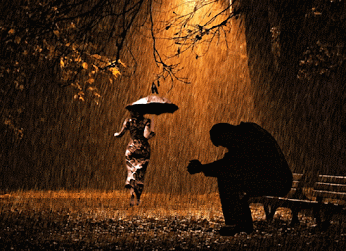Saturday, March 28, 2015
Thursday, March 12, 2015
Mental Health and John Norman Collins - Two Extremes Too Hard To Comprehend At Once
Doing research for The Rainy Day Murders has lead down corridors my researcher and I could not have envisioned when we began this true crime project over three years ago. But one key area of information has remained closed to us, the mental health records of John Norman Collins. That information is privileged and protected.
Shortly after Collins was arrested, his second attorney, court appointed Richard Ryan, arranged a "private" lie detector test for Collins to take. After the examiner revealed the results to the defense attorney, Ryan suggested to John's mother that they go for a diminished capacity plea, commonly known as an insanity defense.
Loretta Collins became unglued and fired Ryan on the spot. He is said to have left the conference room shaken but no doubt relieved to be off the case. When the legal team of Joseph Louisell and Neil Fink took over, there was no more talk of an insanity defense.
Early on in our investigative research, my researcher, Ryan M. Place and I invoked the Freedom of Information Act (FOIA) to obtain Michigan Department of Corrections (MDOC) documents. Every time the Collins' case comes up for review and reclassification, Collins is offered psychiatric services. In the space provided on the form, he always writes, "Not interested."
Most people would agree that it is impossible to help someone who doesn't want to be helped. What good are psychological and psychiatric services to a person whose existence is built upon the mirrored reality of delusion? To break through that wall of falsehoods would be to admit guilt and responsibility; a narcissistic, psychotic personality will not tolerate this.
***
Several months ago, I received an email from Kristin Bronson, whose father worked briefly with John Norman Collins in an official mental health capacity. What follows is a loving tribute to her father:"My father (now deceased) was in the mental health profession all his life, first at Mercywood Sanatorium and then at the University of Michigan Neuropsychiatric Institute. He worked with a vast number and all kinds of patients and always worked very hard to find a way to reach and help them. He usually succeeded, though not often enough. One lost is one too many.
"My father was involved in the evaluation and treatment of John Norman Collins. He was the only patient I am aware of that my father bailed out from his case. It gave him the shudders.
"My dad said that Collins was never going to change. He was too evil. It really got to him, even just being around Collins. He was wickedness incarnate! There were other killers my father worked with, but this one was too much even for him who loved every human soul alive.
"Rest in peace my beloved father, William Arthur Bronson, born September 7, 1926. You helped so many people regain their lives and paid a price to do so."
Labels:
diminished capacity,
FOIA,
insanity defense,
John Norman Collins,
MDOC,
mental health,
psychiatric services,
psychological services,
The Rainy Day Murders,
true crime
Thursday, March 5, 2015
Linking the Rainy Day Murders--One University of Michigan Psychiatrist's View
While I was reorganizing and packing my files, I came across an interesting article that won't make it into my non-fiction account--The Rainy Day Murders--about the Washtenaw County, Michigan murders of the late sixties. I thought I would share it with my readers.
***
After John Norman Collins had been arrested for the first degree murder of Karen Sue Beineman six-weeks later, The Detroit News asked Dr. Holmes for a second hypothetical evaluation in the light of recent developments.
"As far as the murders being linked. I think they may be. I don't think it's a coincidence. They have too much in common. It may be one man or a couple (people) acting together--like Leopold and Loeb, for example, only better organized."
When the professor was asked about the stepped-up tempo of the slayings that spring and summer, he explained that "the slayer could be terrified the first time by his own act, but later the barriers were broken between reality and fantasy. He could do it more easily again."
***
 People often ask me if John Norman Collins worked alone. There is no hard evidence to prove that he had help killing his victims, but other people knew about the first and the second murders. The same can be said for the fifth, sixth, and seventh murders.
People often ask me if John Norman Collins worked alone. There is no hard evidence to prove that he had help killing his victims, but other people knew about the first and the second murders. The same can be said for the fifth, sixth, and seventh murders.By my count, at least three other people were privy to information that could have spared some of the victims' families and friends untold suffering--people who may not have been directly involved with the slayings but who had knowledge and were Collins' close associates. Of that, I am certain!
Labels:
Alice Kalom,
Dr. Donald Holmes,
John Norman Collins,
Karen Sue Beineman,
The Detroit News,
The Rainy Day Murders,
University of Michigan,
Washtenaw County
Subscribe to:
Posts (Atom)



